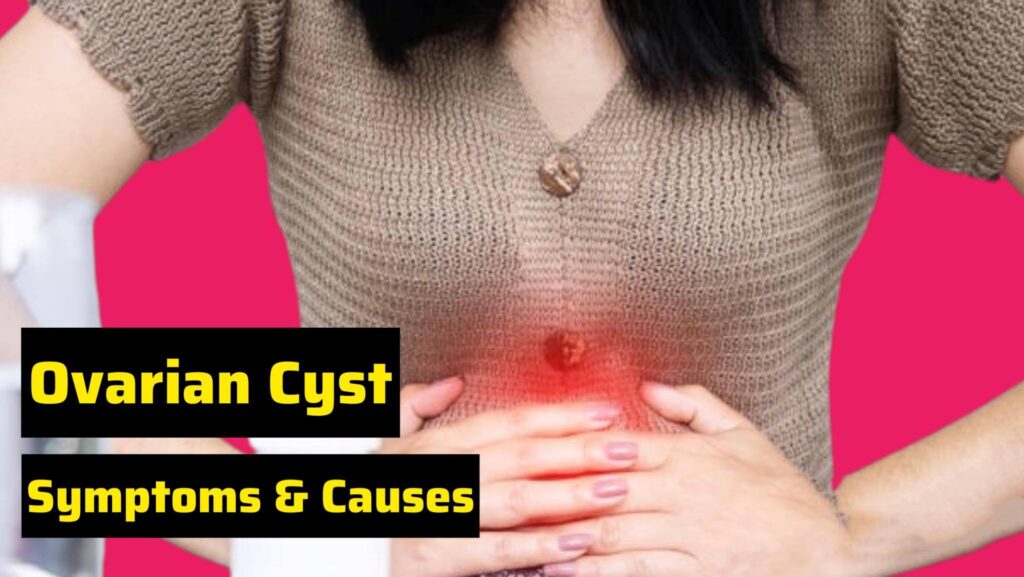
Introduction
Many women experience ovarian cysts during their reproductive years which is a common gynecological problem. While most cysts are benign and harmless, Understanding their symptoms and causes is crucial for early detection and appropriate management. In this comprehensive guide we will delve into the world of ovarian cysts and exploring their symptoms, causes and essential information every woman should know.
Understanding Ovarian Cysts
What Are Ovarian Cysts?
Fluid-filled sacs called ovarian cysts develop on or inside the ovaries. These cysts may form on one or both ovaries and range in size. Despite frequently being painless, Some ovarian cyst forms can be uncomfortable and cause issues.
Types of Ovarian Cysts
1. Functional Cysts
- Follicular Cysts
- Corpus Luteum Cysts
2. Pathological Cysts
- Dermoid Cysts
- Endometriomas
Common Symptoms of Ovarian Cysts
Silent Predators: Asymptomatic Cysts
Not every ovarian cyst causes obvious symptoms. In fact, because they are asymptomatic, Many women’s cysts go undiagnosed. Imaging studies and routine gynecological exams are crucial for early detection.
Recognizing Symptoms
1. Pelvic Pain
- Dull, aching pain in the lower abdomen
- Sudden sharp pain on one side
2. Menstrual Irregularities
- Changes in the menstrual cycle
3. Pelvic Pressure
- Pelvic pressure or a feeling of fullness
4. Pain During Intercourse
- Discomfort or pain during sexual activity
5. Urinary Issues
- Increased frequency or urgency
6. Digestive Problems
- Bloating, constipation, or nausea
What Causes Ovarian Cysts?
Hormonal Imbalances
1. Follicle Development
- Imbalance in hormones like estrogen and progesterone
2. Polycystic Ovary Syndrome (PCOS)
- An underlying condition leading to multiple small cysts
3. Pregnancy
- Cysts may develop as a result of pregnancy
Endometriosis
1. Tissue Overgrowth
- Endometrial tissue growing outside the uterus
2. Adhesions and Scarring
- Formation of cysts due to endometrial tissue sticking to ovaries
Other Factors
1. Age
- Cysts are more common during the childbearing years
2. Previous History
- Having had cysts before increases the risk of recurrence
Diagnosing and Treating Ovarian Cysts
Diagnostic Methods
1. Ultrasound
- Visualizing cysts through imaging
2. Blood Tests
- Measuring hormonal levels and tumor markers
Treatment Options
1. Watchful Waiting
- Monitoring the cyst’s growth and changes
2. Medications
- Hormonal contraceptives to regulate the menstrual cycle
3. Surgery
- Removal of large or problematic cysts
Conclusion
Ovarian cysts are a common occurrence in women’s reproductive health. Understanding their symptoms and causes is essential for timely diagnosis and treatment. If you suspect you have ovarian cysts or experience any related symptoms, Consult your healthcare provider for proper evaluation and guidance.
Frequently Asked Questions (FAQs)
Are all ovarian cysts cancerous?
No, The majority of ovarian cysts are benign and non-cancerous. However, Some may require closer monitoring.
Can ovarian cysts affect fertility?
In some cases, ovarian cysts can interfere with fertility but this largely depends on the type and size of the cysts.
Is surgery the only option for treating ovarian cysts?
No, Surgery is not always necessary. Many cysts resolve on their own or can be managed with medication.
Can I prevent ovarian cysts?
Despite the fact that it cannot totally be avoided, leading a healthy lifestyle and getting frequent gynecological exams can aid in early detection and management.
What should I do if I experience sudden, severe pelvic pain?
If you have sudden and severe pelvic pain, Seek immediate medical attention, As it could indicate a ruptured cyst or other serious condition.
Being knowledgeable about ovarian cysts and their potential effects on your health can help you take preventative action to ensure your well-being. For individualized guidance and care always speak with a healthcare expert.